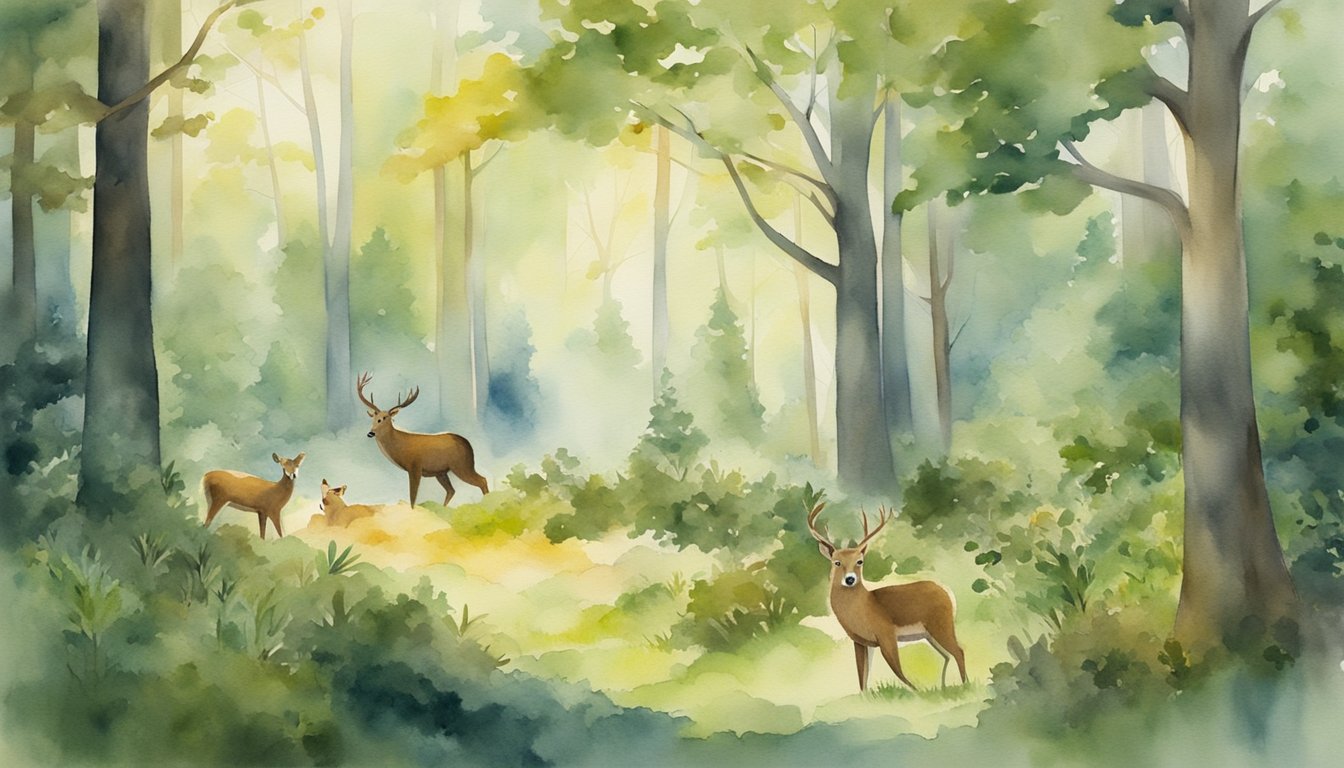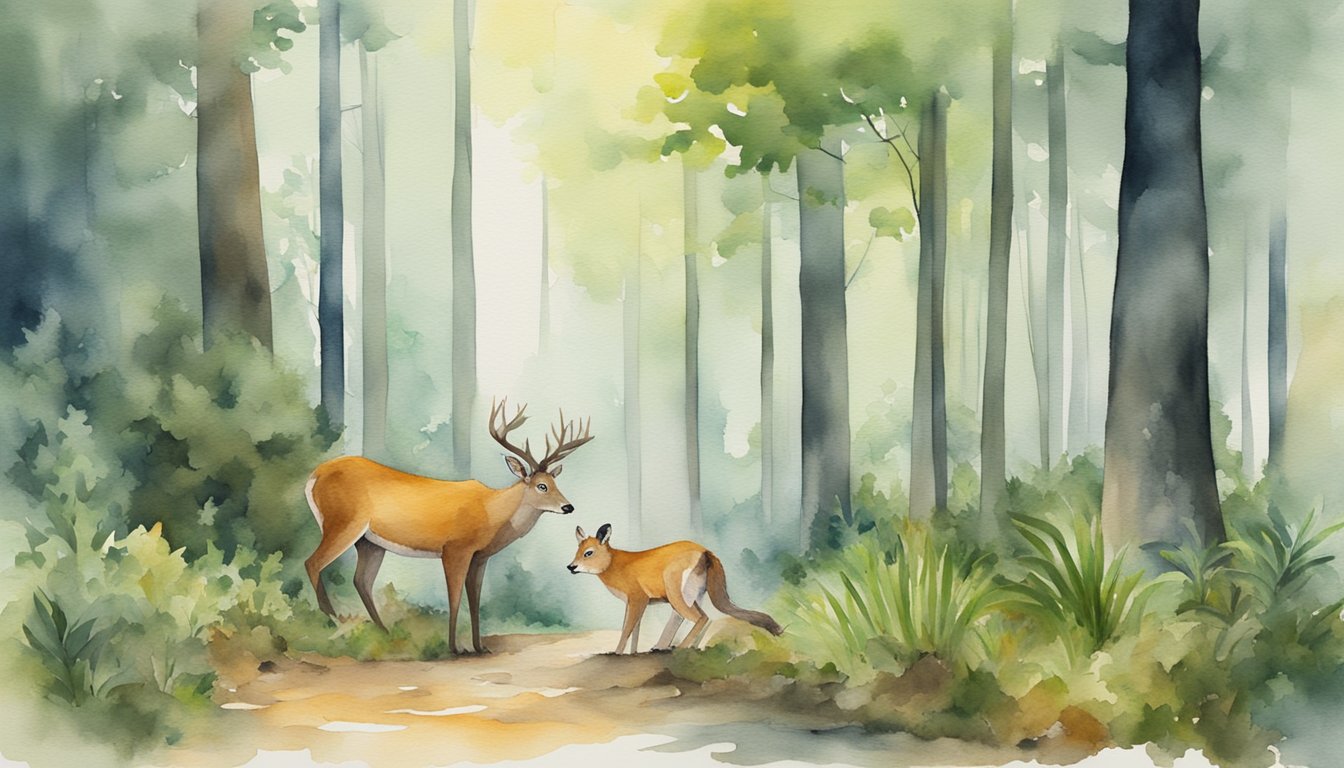Understanding Forest Ecosystems
Forests are vital to sustaining life on Earth, acting as the lungs of our planet. They cover approximately 31% of the land area, ranging from the coniferous boreal forests of the north to the diverse tropical rainforests near the equator.
Species Diversity
Forests are incredibly diverse in terms of species. In a single forest ecosystem, one can find a multitude of animals, each playing a unique role. From the soil-crawling earthworms to the canopy-dwelling birds, each species helps maintain the forest’s health.
Trees: More Than Just Wood
Trees are much more than sources of wood; they are the pillars of their habitat, supporting numerous forms of life. In tropical forests, trees such as the Ceiba provide homes for countless oribatids and other creatures, which in turn contribute to the decomposition and recycling of nutrients.
Climatic Influence
The climate within forests, especially tropical rainforests, holds a delicate balance. The dense vegetation and regular precipitation create a stable environment that sustains an unparalleled level of biodiversity.
Understory and Vegetation
The understory of the forest is teeming with plant life. From ferns to fungi, this layer includes species adapted to lower light conditions, and it supports various animals by providing shelter and food.
Temperate versus Tropical
Both temperate and tropical forests contribute to Earth’s diversity, but they vary greatly. While temperate forests experience four distinct seasons, tropical forests enjoy a generally steady climate year-round, accelerating biodiversity and endemism.
In summary, understanding forest ecosystems is essential for appreciating their complexity and significance. каждыеОни serve as a sanctuary for countless plants and animals while playing a crucial role in global ecology.
Diverse Inhabitants of Forests

Forests around the world are thriving ecosystems, home to a multitude of species that range from the tiny squirrel to the mighty elephant. They play crucial roles in their respective food chains and showcase the planet’s incredible biodiversity.
Mammalian Residents
Forests provide shelter and food for a wide array of mammalian species. In North America, you can find the black bear feasting on fruit and nuts, while the industrious beaver busies itself with building dams. The American forests also witness the soft rustling of squirrels and the padding of moose. Africa, renowned for its majestic wildlife, is home to the omnivorous boars and the primarily herbivorous giraffes and okapi, who roam the forest in search of grass and foliage. Asia’s dense canopies house the intelligent orangutan and the elusive panda, both of which have a diet rich in plants and fruits.
- Black Bear: Omnivore, North America
- Squirrel: Herbivore, Global
- Giraffe: Herbivore, Africa
- Orangutan: Omnivore, Asia
- Panda: Herbivore, Asia
Avian Life and Bird Species
The avian community in forests is as diverse as it is colorful. Birds such as the hornbill in the forests of Asia and Africa, and the hawk in North America, play vital roles as both predator and prey. Owls, known for their nocturnal hunts, are a key predator in many forests, controlling populations of small mammals and insects.
- Hornbill: Omnivore, Africa/Asia
- Hawk: Carnivore, Global
- Owl: Carnivore, Global
Reptiles and Amphibians
Reptile and amphibian populations thrive in forest environments. The damp forest floor is an ideal habitat for frogs, while snakes slither through the underbrush in search of rodents and eggs. Many species, such as the beetles that are prolific throughout forested regions globally, are vital decomposers in the ecosystem, breaking down dead matter and returning nutrients to the soil.
- Snake: Carnivore, Global
- Frog: Omnivore, Global
- Beetle: Detritivore, Global
Specific characteristic traits, dietary needs, and the role they play in their ecosystem make each forest-dwelling species significant. This diversity not only sustains the forest ecosystem but also adds to the rich tapestry of life on Earth.
Conservation Challenges

The well-being of forest animals is threatened by a multitude of conservation challenges, from habitat destruction to direct conflict with humans. These issues not only affect the animals themselves but also the health of ecosystems worldwide.
Impact of Deforestation
Deforestation is a primary concern, particularly in places like Borneo and Sumatra within Indonesia, where it leads to significant habitat loss. For example, Sumatran tigers are struggling as their living space shrinks, putting the remaining population at risk due to both loss of prey and increased encounters with humans. Similarly, Borneo’s lush forests are home to incredible biodiversity, but they are vanishing at an alarming rate, deeply affecting nocturnal animals such as the Borneo Bay Cat, which relies on the dense cover of night and forest to survive.
- Habitat Loss:
- Borneo: Forest cover dramatically reduced by logging & plantation expansions.
- Sumatra: Only less than half of the forest remains compared to 1985.
Predation and Human Interaction
Predation, an essential aspect of natural ecosystems, becomes problematic when prey species, like rodents, decrease due to deforestation and human activities. This imbalance can result in predatory animals like jaguars and Goshawks facing food shortages. On the other hand, human interaction often leads to direct conflicts. In regions where elephants are native, there have been increasing instances of human-elephant conflict due to our encroachment on their habitats. Moreover, poaching remains a serious issue for many species, such as elephants for their ivory and tigers for their skin. This illegal hunting not only affects the individual species targeted but also the overall biodiversity of the forest.
- Poaching Incidents:
- Tigers: Highly prized on the black market; poaching is a serious threat.
- Elephants: Ivory trade continues to drive poaching, despite international bans.
Animals in forest regions are facing uphill battles for survival, with human activity continuing to infringe upon nature’s balance. The imperative for conservation efforts has never been so clear, especially to maintain the rich biodiversity and the populations of these majestic creatures.

